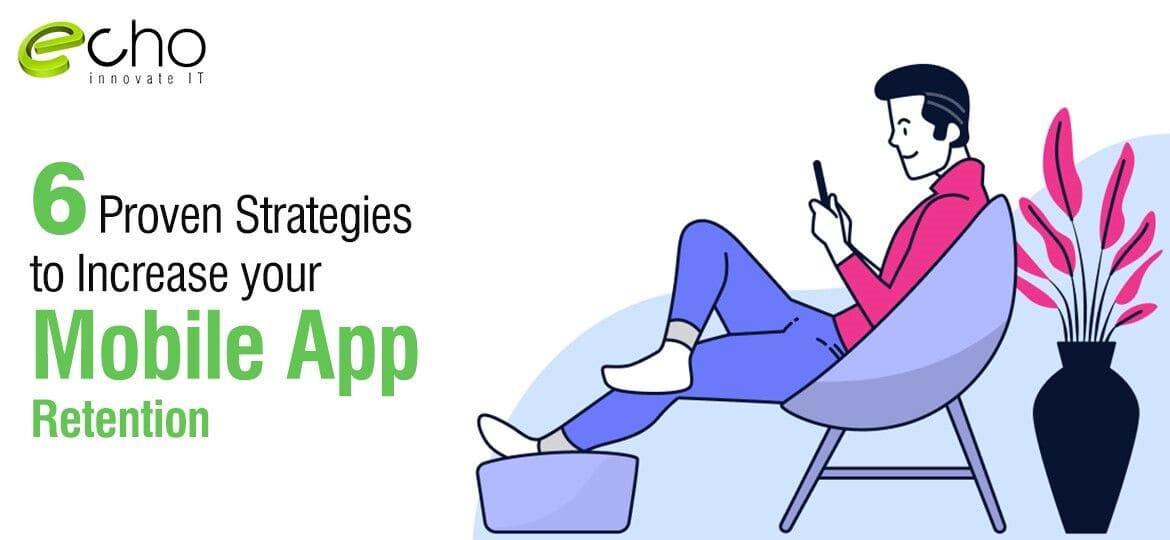Importance of Increasing Mobile App Retention
In an incredibly competitive app market where over 50% of apps are deleted within 30 days of install, retention is crucial for success Rather than focusing only on downloads, smart Android app and iOS app developers prioritize keeping users engaged—this is where retention strategies become mission-critical. Here are six updated, evidence-backed techniques that resonate with US consumers and B2B/B2C audiences in 2025, all while enhancing E‑E‑A‑T and incorporating mobile-first SEO tactics.
1. Optimize Onboarding with Progressive Flows
First impressions matter. Implement progressive onboarding that gently introduces features over time, rather than overwhelming users on day one Start with essentials—a mandatory first experience—and unlock advanced options as users become familiar. Embedding short video walkthroughs during onboarding can highlight mobile-first value, increasing perceived usefulness and habit formation .
2. Personalize Experiences with AI-Driven Intelligence
Users expect apps to understand them. Integrate AI-driven personalization using dynamic push notifications, tailored content feeds, and intelligent in-app prompts based on user behavior. For instance, weather or fitness apps can use AI to detect usage patterns and deliver contextual, timely messages—boosting engagement and reducing churn.
3. Engage with Smart In-App & Push Messaging
Push notifications and in-app messages remain retention staples—but execute with care. Balance frequency and relevance using behavior-based triggers and timing analytics Contextual in-app messaging, such as celebrating usage milestones or providing guidance at key touchpoints, can increase Day 28 retention rates by 61–74%
4. Use Gamification & Reward Systems to Boost Engagement
Modernize gamification by incorporating immersive UX with AR, loyalty points, leaderboards, and streak mechanics . For example, language apps maintain streaks and reward badges, while fintech tools gamify savings with milestone incentives. These mechanisms can improve retention by 20‑40%, especially among mobile users who respond to social competition and recognition.
5. Foster Community & Social Interactions
Retention grows when apps connect people. Add social sharing, community forums, in-app chat, or user profiles to help users interact and feel part of a larger group Fitness apps, for instance, let users share accomplishments, organically increasing return visits by tapping into social dynamics and peer motivation.
6. Monitor, Iterate & Maintain Stability
Continuous improvement hinges on data and reliability. Use A/B testing to optimize onboarding, messaging, and feature flows . Monitor KPIs like churn, DAU, session length, and crashes. Tackle crashes and lag immediately—stability is non-negotiable, as even minor bugs can lead users to abandon your app . Regularly update performance, fix issues, and use analytics to personalize experiences—reinforcing your app’s trustworthiness and authority.
In today’s seemingly endless world of mobile applications, if you think you have a winner, get ready for your bubble to break quickly. If you cross the application start barrier and your application begins to generate downloads, you should know that your work is just beginning. Not only does it create it, but it must inspire as many downloaders as possible to continue using it. And here mobile app retention comes into the picture.
What actually is a mobile app retention rate?
“Mobile app retention rate is the percentage of users who are still using the app after a certain number of days since it was first published.”
Most mobile experts agree that in the world of apps, retention is the most important measurement today to gauge just how valuable your app is in the eyes of your users.
It will allow you to see how many users who download your app and use it once, return as recurring users. Every user retained is equivalent to a new user. Every user retained is equivalent to a new user.
This metric will allow you to see what is working and what is not in your attempt to attract your users, and refine your application as necessary to retain as many users as possible.
This refinement of your app is essential to maximize your retention and increase conversions.
The key to measuring retention is to understand how often users return to the app after their first visit for a specific period of time.
There has been little improvement in user abandonment rates in recent years but almost a quarter of users still desert applications immediately.
At Echoinnovate IT we will help you increase engagement and retention will lead to active and loyal users.
1. Bringing Them On Board
Once a large group of people starts downloading the app, half of the battle has already been won and the main objective is achieved. Now, keeping them engaged post download should be your next step. This is where onboarding takes center stage.
In the context of retaining your users after their first use, you must employ an unforgettable boarding experience for the user without overwhelming them.
Keep things simple: reduce the steps needed for sign up or provide the option to signup via Facebook, Google, etc., and do not overload the user with information from the very beginning.
This will not only create a negative impression but will also cost you your user.
Bombarding your visitors with a handful of information is feasible, but do not overload them with things that aren’t necessary.
Content is king: feed your users with brand new relevant content to get their hands on something new.
Engage them.
Connect them to your brand or product.
Monitoring your users’ every move throughout your app is imperative for understanding user behavior and seeing how they use the app.
Let’s say you present new and amazing content to your new downloaders in the login process. It is something they have never seen before.
It’s something that keeps them engaged with your app, and by the time they get to the conversion screen to sign up, they can’t come up with a reason not to.
This is called showing value before they register.
Before you know it, you have an active user who visits daily.
Thus, your user base will continue to grow.
2. Increasing Mobile App Retention Beyond Onboarding
In all industries, 71% of all app users change their minds in 90 days.
While monitoring your incorporation process and refining is necessary as a key aspect to retain your users, you want to continue this process beyond incorporation, to continue refining how your application involves your active user base.
The starting point of your user retention strategy must be figuring out how to get first-time users coming back. If you can do that then the success of your app is almost guaranteed.
By understanding the reason behind the actions of new and active users, you can learn, refine and create new ways to incorporate and engage them, keeping the application retention rate high.
Application vendors should focus on increasing retention in their attempt to increase lifetime value (LTV).
LTV is all about measuring the value of a user over time.
Defining it is different for each app, but it must be a quantifiable metric and linked to certain actions within your application.
3. The Added Value of Visual Mobile Analytic
You need to know more than the key metrics that traditional analytics provides. It’s vital to know how many downloads have been made, how many drop out, but you don’t get an idea of the user’s experience and behavior to conclude as to why.
You are missing where they are pinching, sliding, touching.
Have a mobile engagement platform that grants you the insights you need to understand how well you are retaining users.
UX is the most important aspect in Visual App Analytics, Appsee, includes features to turn your understanding of user behavior into action and allows you to optimize your application in terms of UI, UX, Design, etc. when designing an app.
UX not only affects user retention but also acquisition and engagement.
This will result in a higher retention rate, conversions, and monetization of the application.
The next piece of the puzzle is to refine the app retention strategies.
Without converting your downloaders into active users and retaining them, you will most likely never see those users again.
More importantly, all your efforts from day one will be a waste of time and money.
4. Optimize the Onboarding Experience
Here’s your chance to shine bright. You don’t get a second chance to make the first impression.
If you want more long-term users, the magic starts with the onboarding process.
If users do not understand the value of your app, their odds of churning drastically increases.
The best way to bend the retention curve is to point to the first days of use and, in particular, to the first visit.
Have a mobile engagement platform that grants you the insights you need to understand how well you are retaining users.
Let users try some of the features of your app before signing up or before becoming a paid user.
5. Invoking Easy Navigation
The last thing you’d want about your app is a large number of negative reviews. User feedbacks are very important and so are their questions.
Try to find out questions that are asked frequently by the users and answer all of them with all the needful resources.
Try finding out these questions via feedback mail, live chat, etc. Make a list of all these questions and answer them accordingly.
Users are bound to have few questions about the products, services, or company. You want to try to answer those questions in your blog posts, it can sometimes be difficult for users to find the exact answers to their questions.
Thus it is important to build an effective FAQ page that gives answers to all the questions in one place without much hassle of understanding.
Build a help page that is easily accessible and can be reached out by the app users in case of complications encountered during the usage of the app.
6. Make an App With Minor Improvements
Try developing an app that needs a lesser number of improvements. In that case, you need to listen to the app users precisely and understand their needs.
Focus on the core functionality of the app and try to make it bug-free.
The more you understand the user needs, the lesser will be the requirement to improve your app. A good app always does what its users expect it to do. Therefore, make sure to have documentation of every feature before developing the app.
Keep on working on strategies and never settle for less than excellence.
App Store reviews are best for constructive feedback. Constructive feedback helps you to strive towards the excellence of your app.
You must solve all the apparent performance flaws. This will ensure that your app does what it is supposed to do without any issues.
Theoretically, a human can build an error-free application, but practically it is not economically feasible due to the resources that are needed. Thus, stick to the most essential part of the app and try to make it bug-free.
Summary: A Holistic Retention Blueprint for 2025
By combining smooth onboarding, intelligent personalization, context-sensitive messaging, gamification, community, and rigorous QA, your mobile app—whether built for Android or iOS—will stand out in 2025’s crowded marketplace. Underpin this with tech-forward features like AR, voice, and 5G, and you’ll deliver a trustworthy, expert-crafted experience that promotes long-term engagement, conversions, and brand trust.
Let me know if you’d like to expand with UI/UX design principles, code snippets for push notification scheduling, or case studies showcasing enterprise-level retention success!
5% of user retention can boost profit by 25% to 95%.
There are ways to boost mobile app engagement and retention. Generally, retention-related decisions are based on guesswork, gut feeling, and knee-jerk reactions. This means many iterations are merely wasted on details that will not affect real retention problems.
One of the most overlooked aspects of the retention of mobile app users is the importance of metrics and data. It is essential to keep a record of the number of users of an app. This will eventually help in creating a user retention strategy.
With proper metrics, you can find why particular users decide to uninstall your app. Also, remedy the issue before it affects others. By doing the right things, holding people’s attention, and growing your audience is totally doable.
Try to build an app with quality, it will eventually result in app retention and engagement. Contact Us to get started with your app.
FAQs
What is a good retention rate for mobile apps?
If the average retention rate is 5% and you are doing 10%, it makes sense to focus your efforts on other areas. Mobile apps have pretty crappy retention rates and some reports have shown that losing up to 80% of your users is normal though the best apps tend to do better. Another key factor in understanding retention is the type of app. Mobile games might see high retention rates in the first few days with a sharp drop off while food ordering apps might see a high mobile app retention rate across 90 days but very low daily usage.
Which app category has the highest retention rate?
Publications apps have the highest retention rate. Other successful categories include social apps and gaming.
How to increase app retention rate? Advanced Strategies
Here are some strategies to increase app retention rate:
- Track data as early as possible
- Beta test your app
- Soft launch your app
- Ensure that product and marketing are aligned
- Optimize your user onboarding
- App Store Optimization(ASO)
- Personalization
- Push Notifications
- Email Marketing
- In-app messaging



